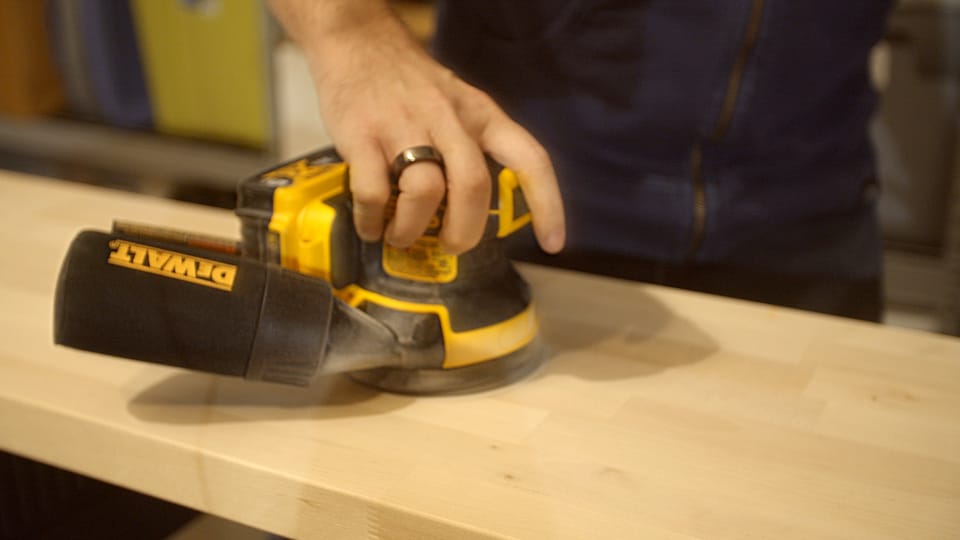
Making Stuff around the House (and Becoming my Father)
When I was a kid, my dad watched Bob Vila's This Old House every Sunday morning. At the time, I knew it as the most boring show on television, possessing zero entertainment value for a ten year old boy who'd rather be watching Transformers.
The show had no games. No robots. No fancy animations. The hosts pontificated on the best type of nail to use for the underside of a countertop or how best to cut a particular wood joint for stability. Are you kidding me? C'mon, Dad! Who cares?!?! Why would anyone spend their free time watching such nonsense? Wouldn't you rather play a game with your son? (Note: My dad constantly played games with us, but I felt so strongly about the banality of This Old House that my ribbing knew no bounds).
Of course, over the past decade, well into his retirement, I've watched my dad build furniture and (with help from Mom) make significant improvements to their house. I've realized his devotion to home improvement shows demonstrated an interest in building that I didn't grasp in my younger, self-centered days. He did, after all, earn a degree in Industrial Engineering, so I shouldn't have been surprised. Still, at the time, I could never muster much interest. I cared more about computers and code than trips to the hardware store.
Then a strange thing happened. A few years ago, I started watching Adam Savage's YouTube videos. I'm a fan of all things Adam dating back fifteen years to when his Mythbusters antics began entertaining my daughters and I.
In his videos, he makes all sorts of unique items, from wooden shop storage boxes to Styrofoam houses to replica movie props. Despite my dad's career in manufacturing, I'd never paid much attention to metalworking or the awe-inspiring spectacle of a steel lathe carving through metal. Adam enlightened me. What drew me to his style of building more so than This Old HOuse was subject matter.
Adam didn't improve a bathroom or replace a countertop. He replicated Han Solo's blaster from Star Wars. He made a nerf gun that shoots ping pong balls. He built a poker table and swords and display boxes for prop weapons. Ultimately, the lessons he teaches about crafting and manufacturing are not wildly different than skills taught on This Old House, but they intrigue me in a way Norm Abrams never could.
Adam is a nerd and a geek. His face lights up when talking about the same things that make my face light up. His enthusiasm is boundless, his curiosity infinite, and he directs it toward projects I also feel enthused about.
The point here: After two decades of writing code and software, Adam stirred my latent desires to craft tangible objects.
I bought a table saw and made some shelves to store it.
I mimicked one of Adam's builds for a set of storage containers before I had any idea what I would use to fill those containers.
More recently, I did my own One Day Build to create a shelving unit for my office desk. During quarantine, I've explored podcasting and game streaming and audio/video production more than ever before.The result is a cornucopia of gadgets and equipment added to a desk already cluttered with technology. So I whipped together a rudimentary shelf to stack gadgets, to make them easily accessible, and to allow for easy expansion if I acquire more gizmos. It's nothing fancy, but it works, and I built it in a day.
The most ambitious project I've tackled to date is a set of shelves to fit above a piano keyboard in my kitchen/dining room. My girlfriend and daughter both play piano, so I had the idea of converting the space above the piano to hold all their music books and scores. My girlfriend plays professionally (or did prior to Covid), and she worked in musical theater for a decade, so she has tons of music.
Not wanting the shelves to overpower the space, I tried an iron pipe build. Most of the examples I found online involved a single pipe support on either side of the shelves. Given how high the shelves would be, the weight of the wood, the width of the span, and the unknown weight of books, I opted for double supports, performing exactly no mathematical calculations to justify my decision.
I ran into all sorts of unexpected problems. Cross supports were difficult because you can't tighten the pipe on one end of the support without loosening it on the other. Solutions exist for this problem, but I was working on a birthday deadline, so I went with a single cross support.
I invited my dad over, because I need help. He taught me some of those things he learned on This Old House, like which sandpaper grit to use and the difference between types of polyurethane. We tried unsuccessfully to use a drill press he built himself. He stuck a long metal file in a drill; the file snapped in half as it spun, much to our fear and amusement. He taught me a few cutting tricks, and he demonstrated how easy it is to stain wood.
The end result is a delightful set of bookshelves that served as a perfect birthday gift. (The girlfriend loves them).
The point of all this is that I'm excited to be learning new skills. I'm thrilled by the satisfaction of making something tangible and useful. And my dad and I have a new set of shared interests to talk about during commercials of Chicago Bears games. Win win win.
With so much more to learn and build, the only real question is: What's next?